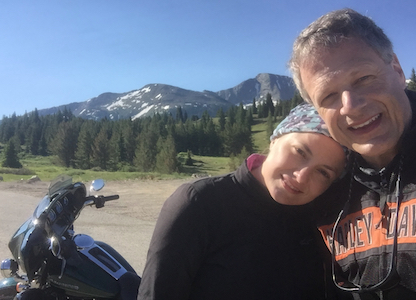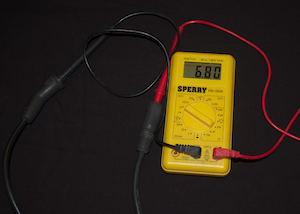Fuel pressure regulator kills the joy (and the engine)
 I finally got my bike back from Rommel's Harley Davidson in Durham last Friday.* They had it almost three weeks since it died along I540 on Sunday, August 25.
I finally got my bike back from Rommel's Harley Davidson in Durham last Friday.* They had it almost three weeks since it died along I540 on Sunday, August 25.
On Sunday the 25th, I had just gotten on the highway at NC55 and was headed to my friend Mike Russo's house in Cary off Harrison Avenue when the engine suddenly quit. I coasted over to the side of the road wondering what could have caused such a sudden end to my ride. I was a very unhappy camper. It's been such a frustrating year with this bike. More than once I have found myself thinking of going to the Honda dealership in Durham and going over to the Dark Side.
I called Mike and told him what had happened. He suggested I check my fuses, which I had planned to do anyway given my experience earlier this year. I checked them and they were all fine. I called him back and described the symptoms--the starter was turning the engine over but the engine wouldn't start--and he asked me if I had gas. I did, but it was a good question to ask because the way the bike was behaving, it was as if I had run out.
 Mike arrived in about 20 minutes pulling is covered motorcycle trailer. It was only about 4:00 p.m. and he remembered that the dealership in Durham now had Sunday hours. I called, and sure enough, Rommel's HD was open. So we took the bike straight there.
Mike arrived in about 20 minutes pulling is covered motorcycle trailer. It was only about 4:00 p.m. and he remembered that the dealership in Durham now had Sunday hours. I called, and sure enough, Rommel's HD was open. So we took the bike straight there.
The friendly but remarkably slow service people at Rommel's ordered the parts my bike needed in serial order rather than all at once, thus extending what should have been a 3-5 business day process out to almost three calendar weeks...all during some of the best weather we've had this year. But I digress.
It turns out that what stopped my bike cold on I540 near I40 was a cracked fuel regulator housing (HD Part No. 62373-01), $17.99. The fuel pressure regulator itself (HD Part No. 27408-01, $39.99) was also suspect, so the Rommel's HD mechanic ("tech") changed that out too. In the photos I've included, the black plastic part is the housing and the smaller metallic object, which fits into the housing, is the pressure regulator itself.
I am surpsised they didn't change out the fuel filter while they were under the gas tank. Apparently, the fuel pump looked fine, so they didn't change that. There was another 2006 Electra Glide there at the same time as mine. It had over 100,000 miles on it and its fuel pump had failed. (My bike has 87,700 miles on it right now.) I now know to monitor the condition of the fuel pump over the next year or two.
Before they diagnosed the fuel pressure regulator as the culprit, they thought the air intake seals (HD Part No. 26995-86B, 2 x $2.99 each) might be at least part of the problem. They probably needed replacement anyway, but they did not have any apparent effect on how well my bike runs.
I rode to Hendersonville and Asheville over this past weekend (September 14-15) without any major problems. Altough I did notice that either my oil pressure gauge or my oil pump is going. The needle on the pressure gauge will, for no apparent reason, repeatedly dropped to just above 0, even at 3,000 RPM. Then, again for no apparent reason, the needle would move back up to a more normal reading.
Next month I plan to replace my broken oil temperature gauge and at the same time, I will try a new oil pressure gauge and hope that's the problem, rather than the oil pump. I'd rather not tear the engine apart just to replace the oil pump.
I'd like to thank my friend Mike Russo for bringing his trailer out to the side of the road and rescuing me and my old girl.
*P.S. I've given up on the service department at the Harley dealership in Raleigh. They've lied to me and insulted me more than I care to tolerate. Oh, and they do a piss-poor job of actually making the repairs--if they bother to make them at all.

 Michael A. Uhl
Michael A. Uhl












